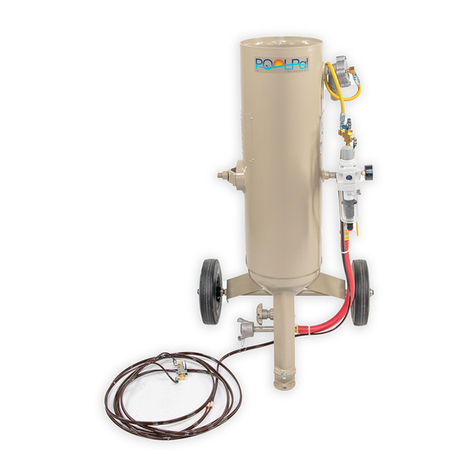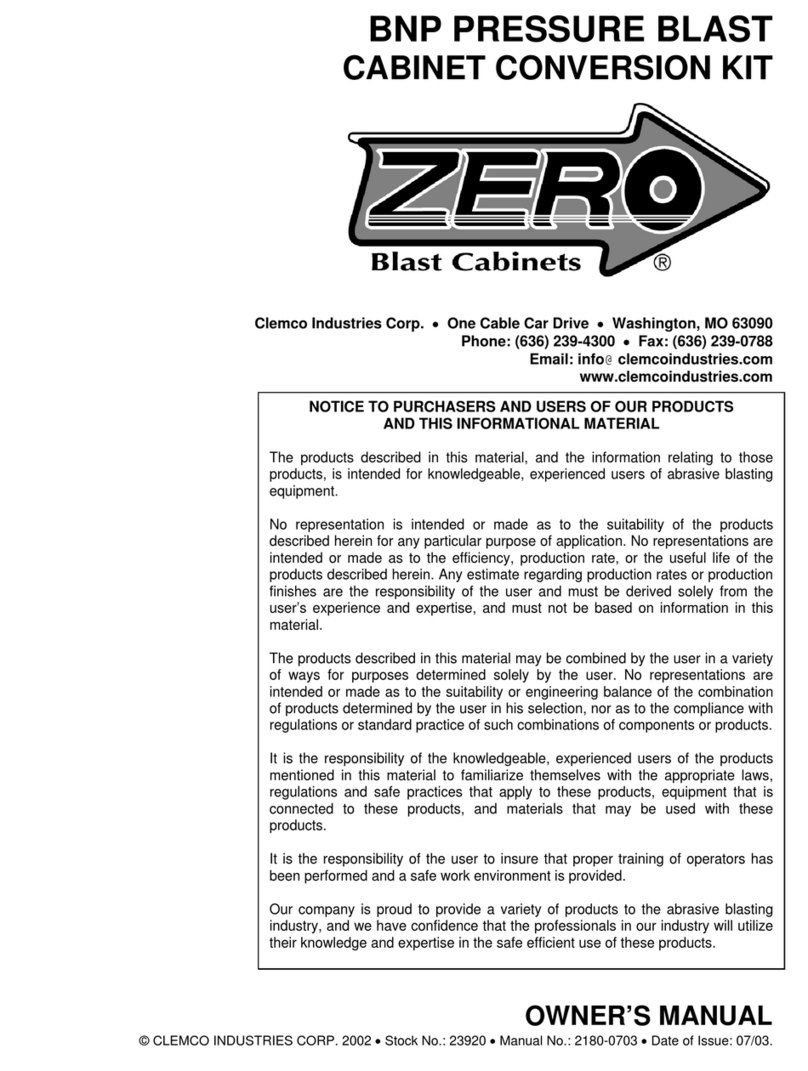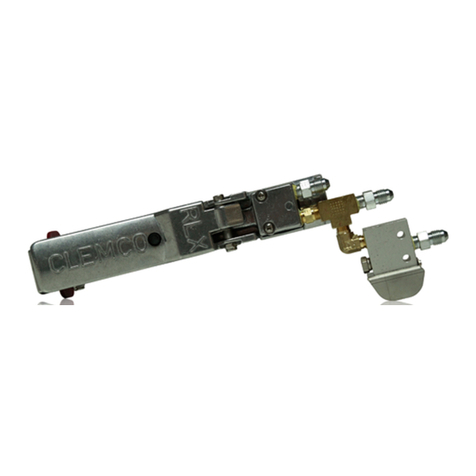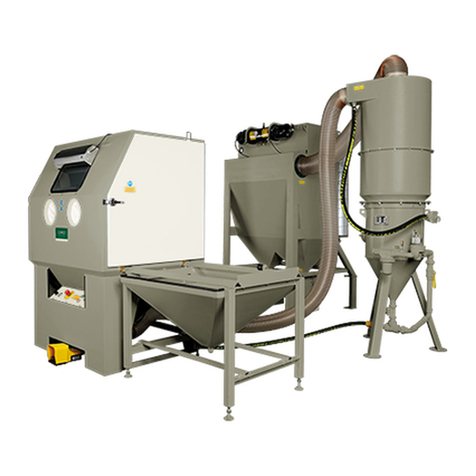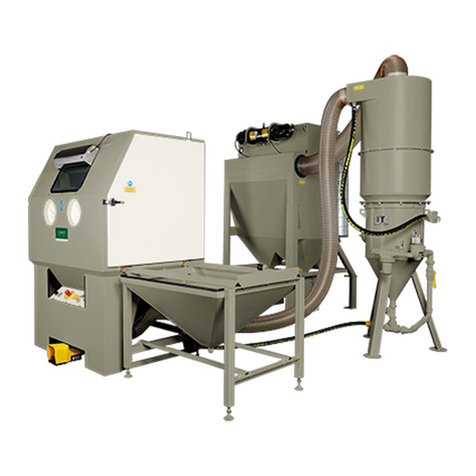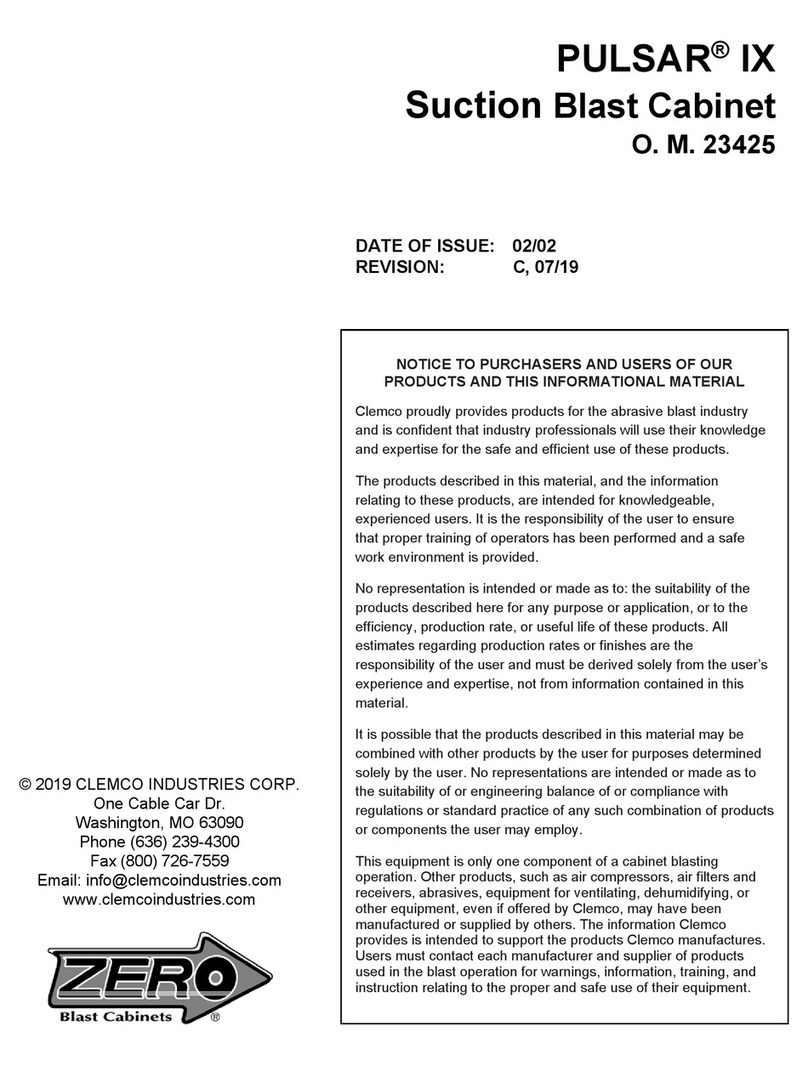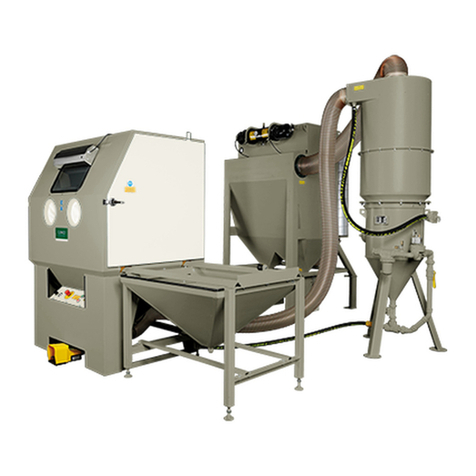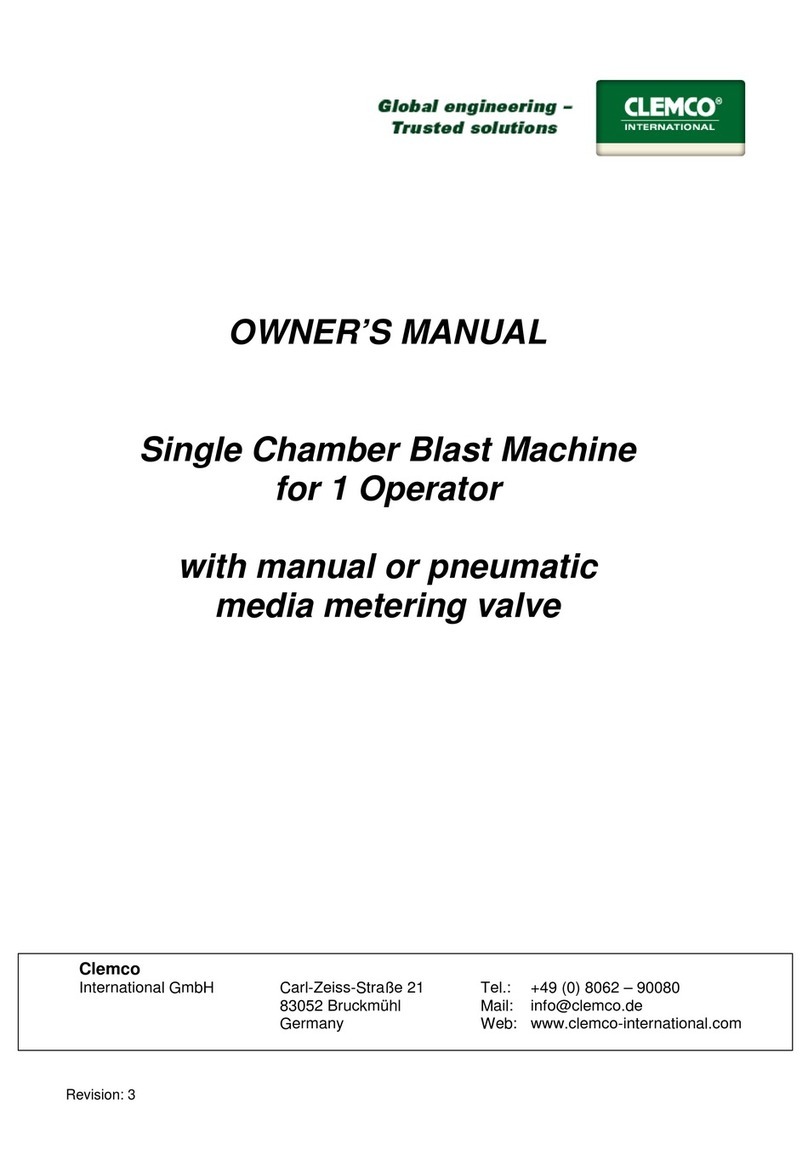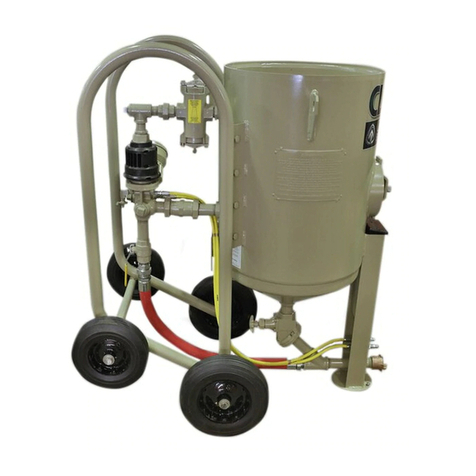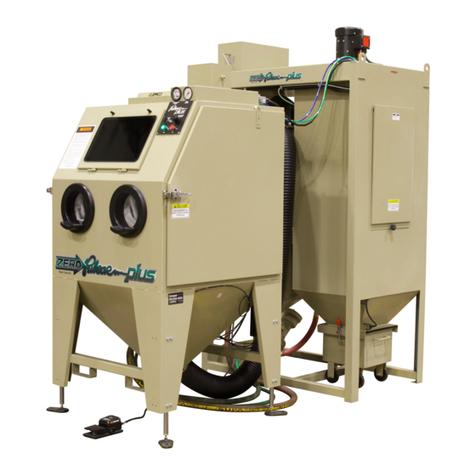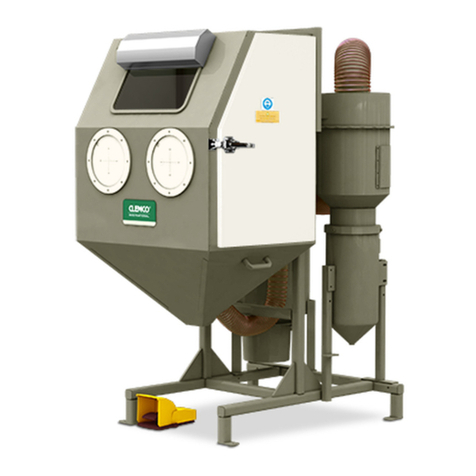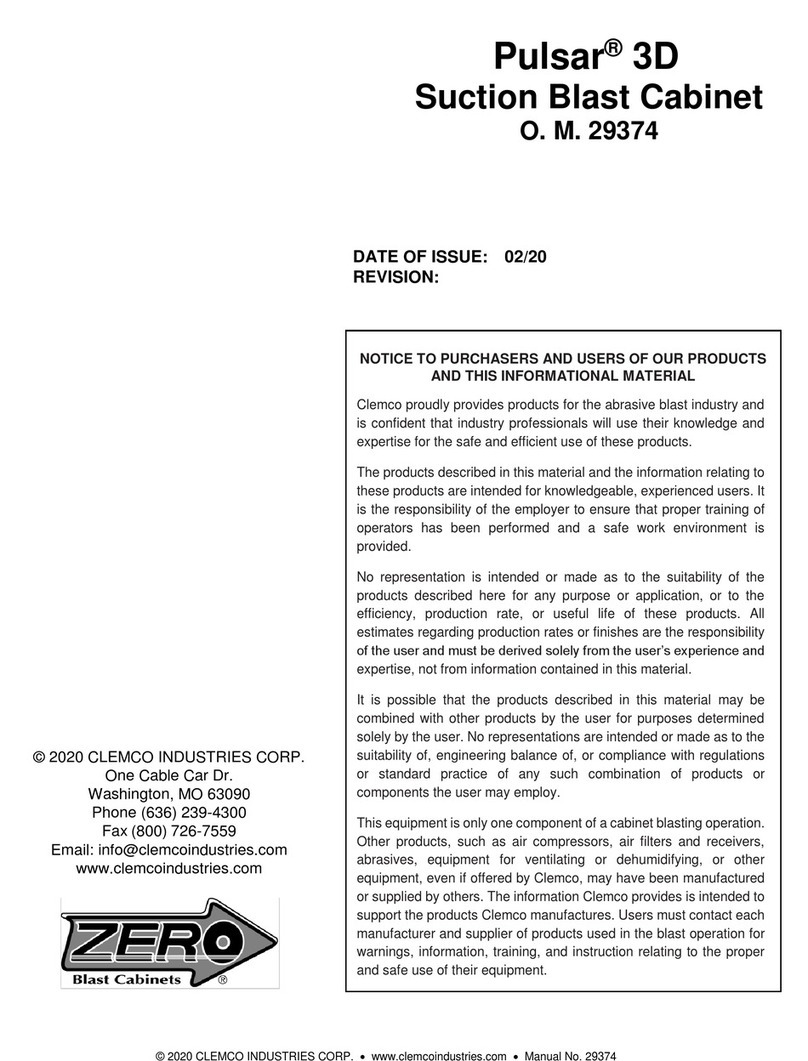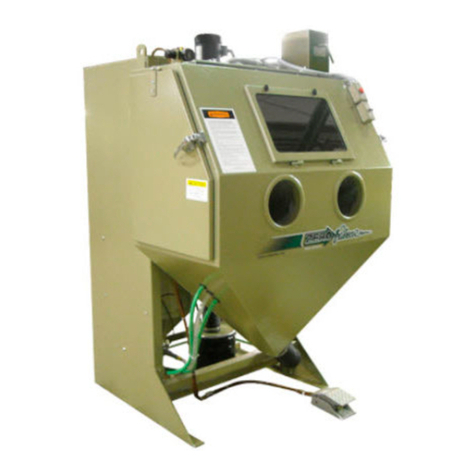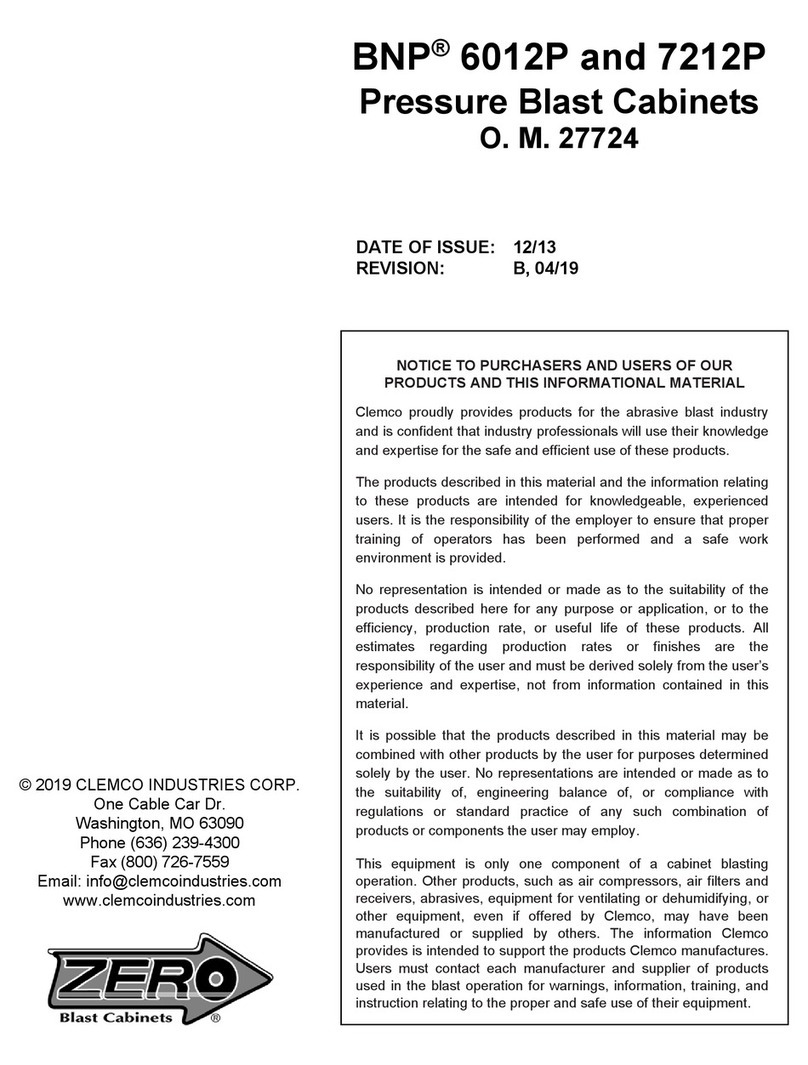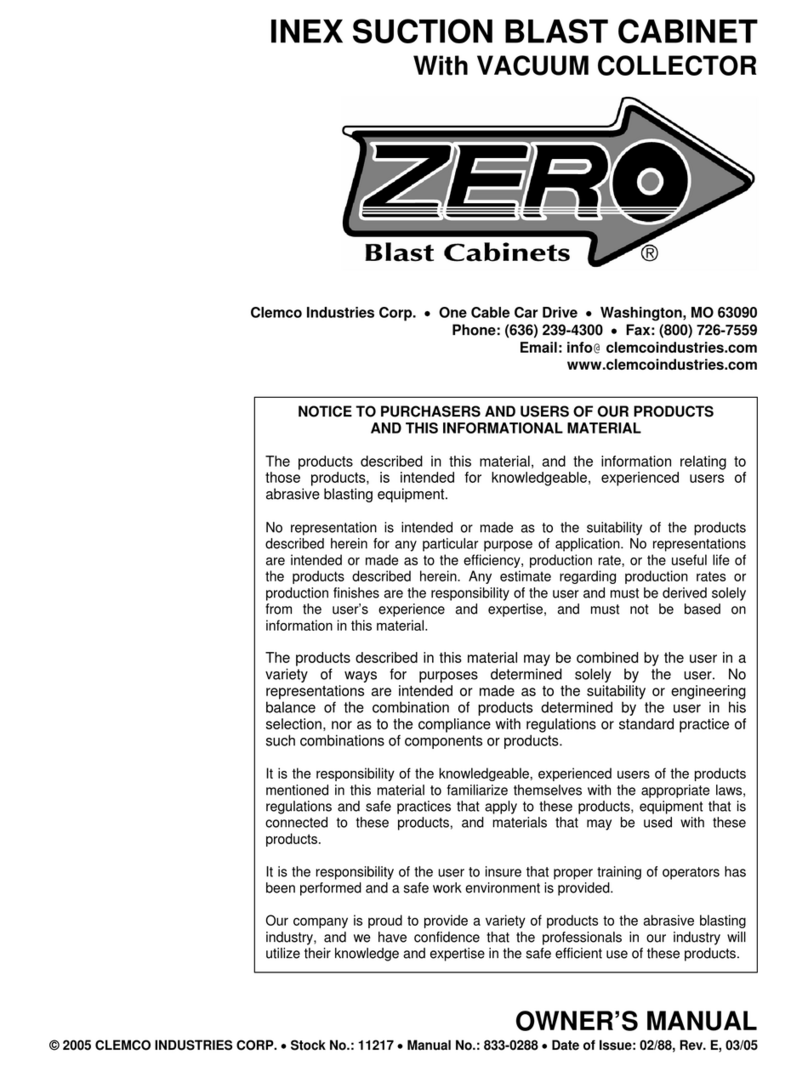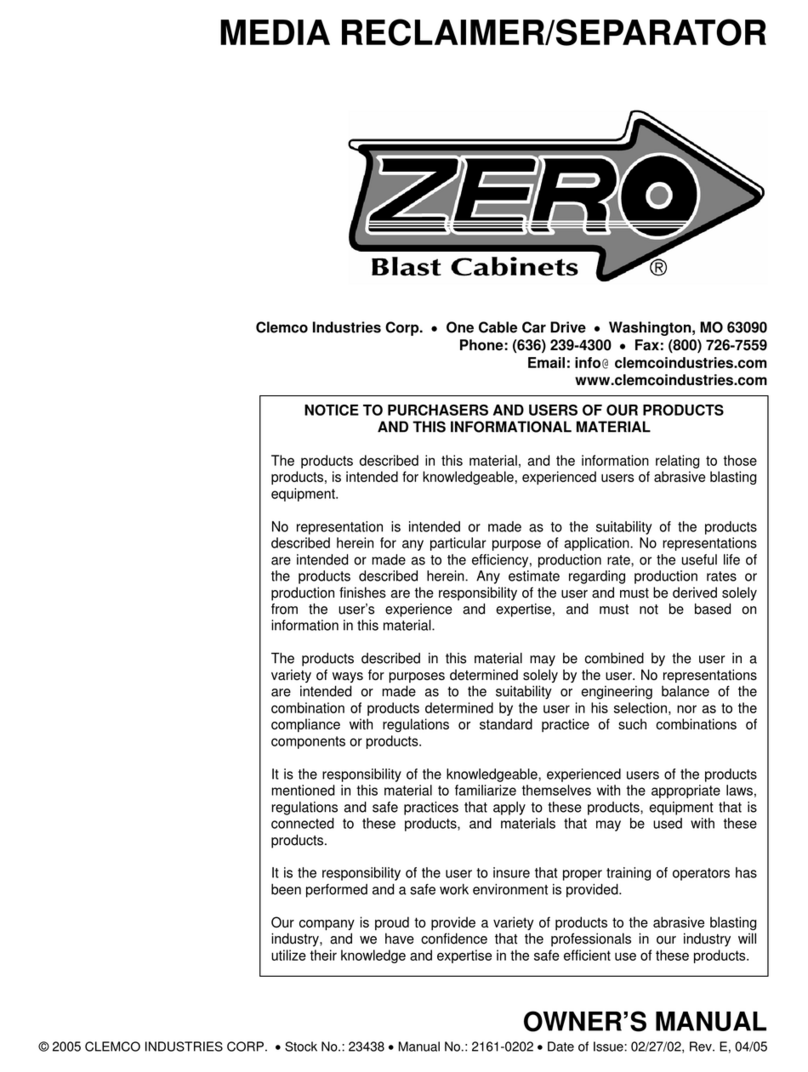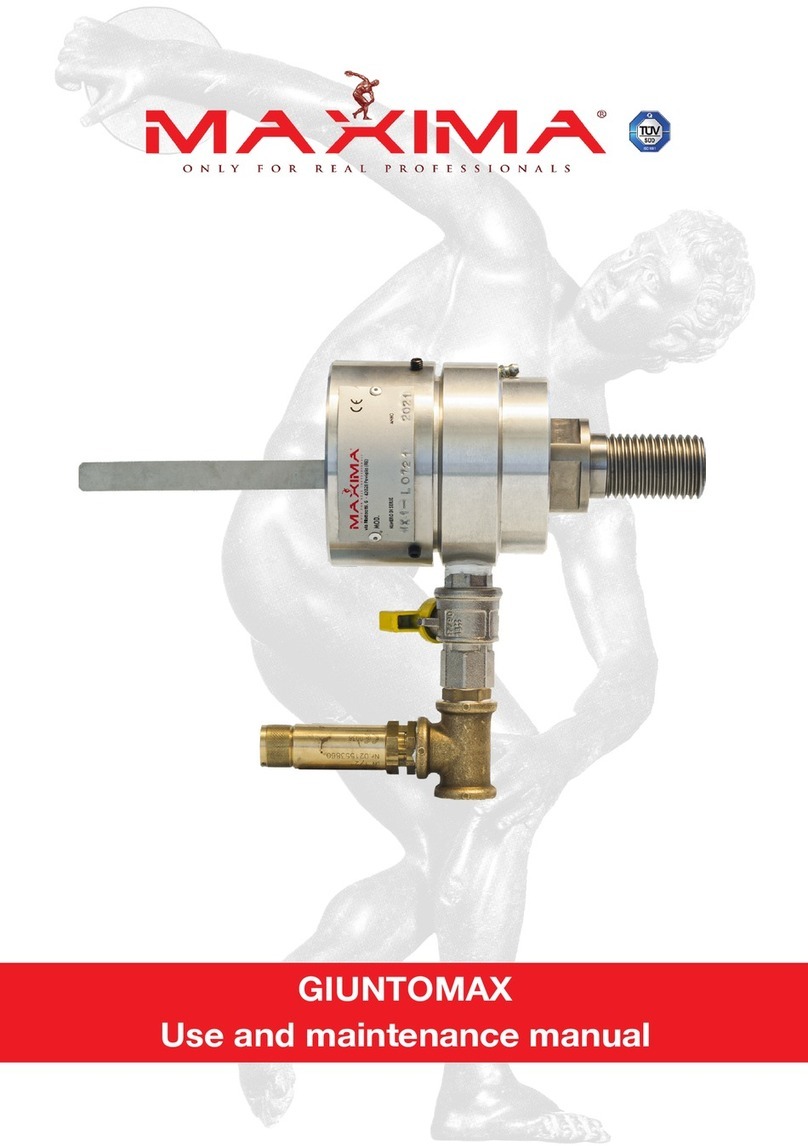
BNP-6012P and 7212P PRESSURE BLAST CABINETS Page 4
© 2013 CLEMCO INDUSTRIES CORP. www.clemcoindustries.com Manual No. 27724
1.8 Dust Collector Options
WARNING
Prolonged exposure to any dust could result in
serious lung disease and death. Short term
ingestion of toxic materials, such as lead dust or
dust from other heavy metals and corrosives,
could cause serious respiratory injury or death.
Identify all materials that are to be removed by
blasting. Use reverse-pulse dust collectors with
HEPA after-filters if lead coating or any other
toxic materials are being removed by the
blasting process. Do not use dry filter dust
collectors for those applications.
1.8.1 Dry Filter: A push-through dry filter (where the
motor is mounted on the reclaimer) uses tubular filters
which trap dust on their inner surfaces. A dry filter is
efficient for use with 900 cfm reclaimers, and moderate
dust contamination. The filters must be manually shaken
at least every two hours and the dust drawer emptied
regularly. This type of dust collection must never be
used in applications which generate toxic dust.
1.8.2 Reverse Pulse Dust Collector: A pull-through
reverse-pulse dust collector (where the motor is mounted
on the dust collector) is the most efficient dust collector
option. Cartridge filters are automatically cleaned by a
periodic pulse of compressed air. This type of dust
collector used with the optional HEPA filter must be used
in applications in which toxic dust is generated. A
separate manual is provided with the reverse-pulse dust
collectors.
1.8.3 HEPA Filter: HEPA filters must be used
when removing lead coatings or any other toxic
materials. Optional HEPA after-filters provide additional
filtration, and are available for use with a reverse-pulse
collector. See Optional Accessories, Section 9.1.
1.9 Metering Valve Options
1.9.1 Unless otherwise specified at the time of order,
cabinets are shipped with a fine-mesh Sentinel metering
valve. The valve is for use with 50 mesh and finer
media, and #10 and finer glass bead. The optional
Sentinel metering valve is for use with 50-mesh and
coarser media. Conversions kits easily convert the
valves either way. Kits are listed in Section 9.1.
1.10 Blasting Media
1.10.1 ZERO cabinets utilize most common reusable
media specifically manufactured for dry blasting. Media
sizes shown in Figure 4 are for guidelines only. The
guidelines are based on standard nozzle size and
average conditions, such as blast pressure, media/air
mixture, visibility inside the cabinet, humidity, and
reclaimer cleaning rate.
Several factors affecting the reclaimer cleaning rate
include: reclaimer size (cfm), contamination of parts
being cleaned, media friability, damper setting (static
pressure), type of dust collection, dust collector filter
loading (differential pressure across the dust filters).
As a rule, larger nozzles deliver more media, requiring
higher performance from the reclaimer. Larger nozzles
decrease the maximum mesh size of media from those
normally recommended. On the other hand, leaner
media flow and lighter or less dense media can increase
the maximum usable media size. Media that is finer than
those recommended may decrease visibility in the
cabinet, and increase carryover to the dust collector.
Media coarser than those recommended may be too
dense for the reclaimer to recover from the cabinet
hopper.
1.10.2 Steel: When the recovery hose diameter is
suitably sized (usually reduced one size from standard)
steel may be used with 900 cfm and larger reclaimers
on single hopper cabinets and 1200 cfm and larger
reclaimers with double hopper cabinets. When using
steel media, conveying hose should have a smooth
durable lining, and rubber curtains should be used to
protect the cabinet walls from peening and rapid wear.
Cabinets configured for steel media use can be ordered
from the factory with appropriately sized conveying hose
and curtains installed.
1.10.3 Sand and Slag: Sand should NEVER be used
because of the respiratory hazards associated with
media containing free silica. Slags are not
recommended because they rapidly breakdown and are
not recyclable, making them unsuitable for cabinet
applications.
1.10.4 Silicon Carbide, Aluminum Oxide, and
Garnet: These are the most aggressive of the
commonly used media. These may be used, but the
service life of any equipment components which come
in contact with the media will be reduced. To avoid
unscheduled down time, periodically inspect the
reclaimer wear plate, exhauster housing and paddle
wheel, blast hose, and nozzle for wear.
When using aggressive media only occasionally, install
an optional aluminum oxide kit. When these media are
used extensively, use a full rubber-lined reclaimer and a
reverse pulse dust collector. Interior rubber curtains in
the cabinet are suggested. Nozzles lined with boron
carbide will extend nozzle wear life. See Optional
Accessories in Section 9.1.
